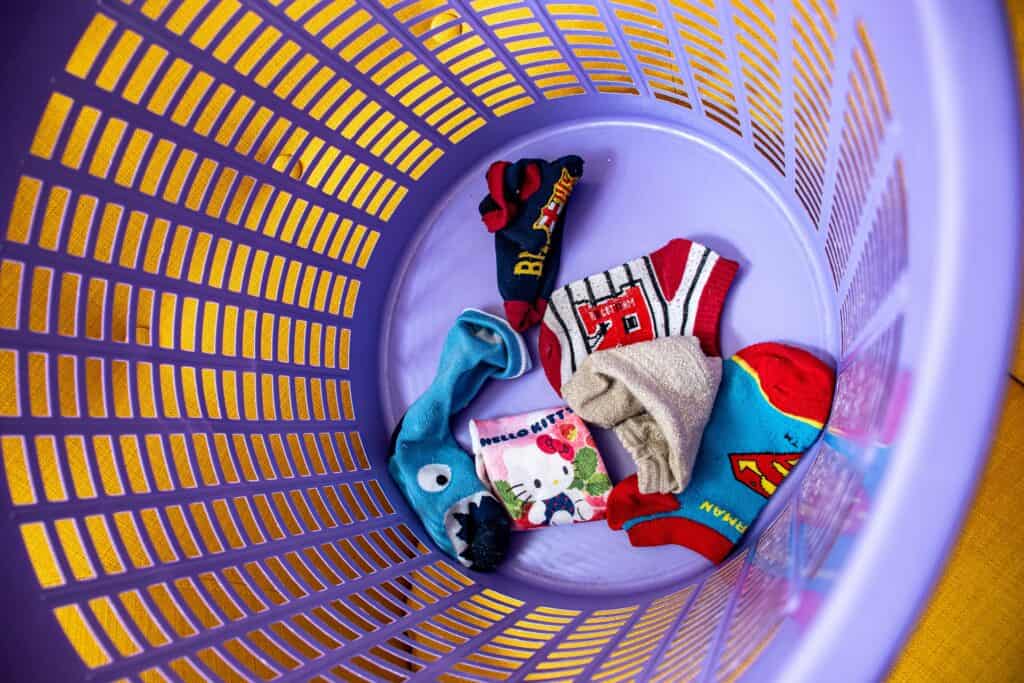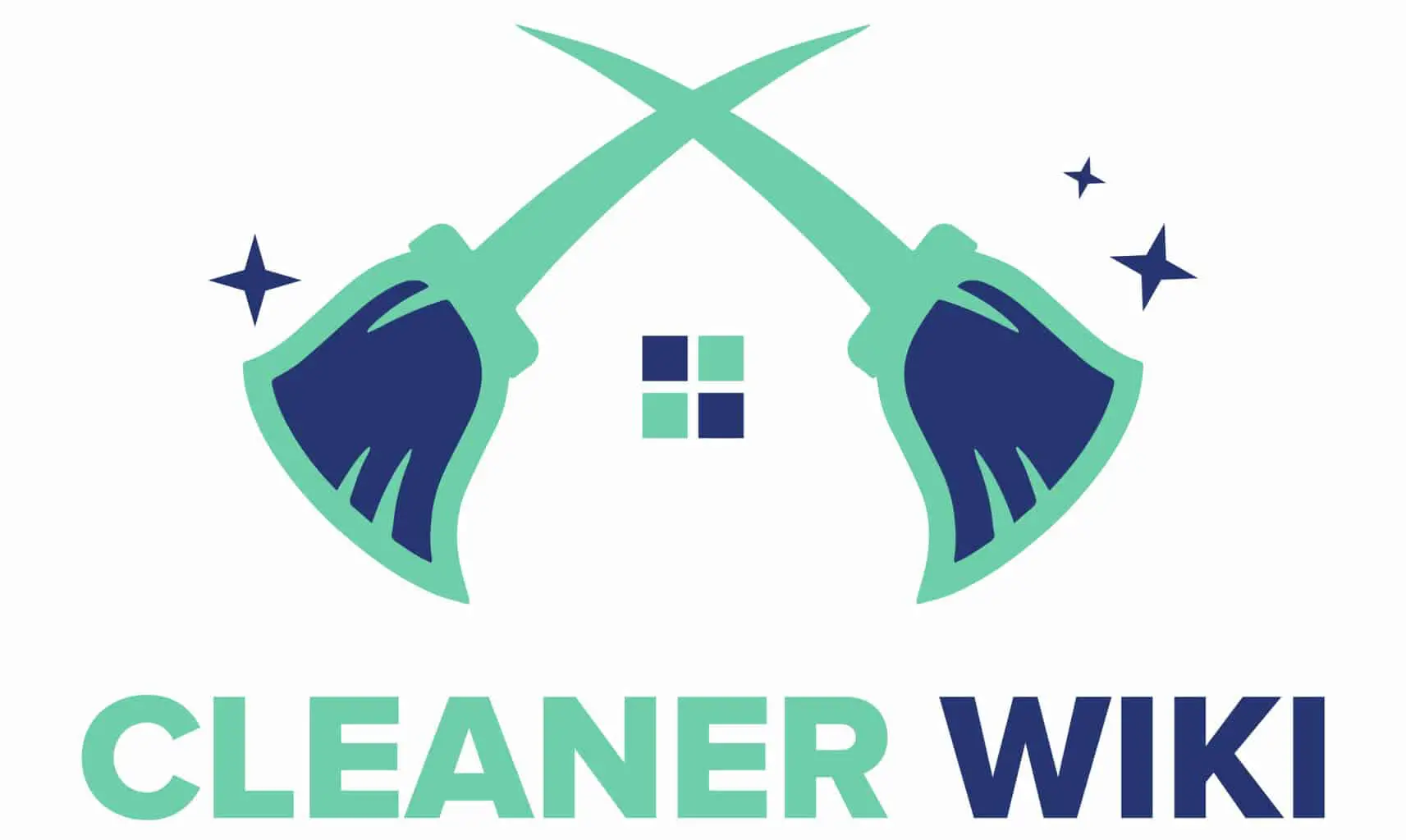As an Amazon Associate we earn from qualifying purchases.
Socks are a basic item in most wardrobes. For this reason, it is important to clearly understand how to clean socks properly. Without the right type of care, socks can easily lose elasticity and become useless to you.
Contents
How to Clean Socks Correctly
When it comes to cleaning socks, you have two options:
- Use a washing machine
- Clean them manually using your hands.
It is important to note each pair of socks comes with specific instructions on how to wash and dry them. Therefore, we advise you to check that information first.

The most common types of socks are light polyester ones and heavy cotton or wool ones. The latter is a better bargain because they are more comfortable and breathable. However, polyester socks are easier to wash and quicker to dry compared to cotton socks.
We will look at how you can clean your socks using a washing machine, and manually. We will also show you how to easily dry them. On top of it all, we will show you how to make your white socks brighter and alternatives to bleach that you can use.
Cleaning Socks with a Washing Machine
To begin with, not all socks can go into a washing machine. On the other hand, even if the care direction allows you to use this method, stretching, snagging, and tangling might be other concerns. Luckily, if you have high-quality socks and wash them correctly, You can easily avoid these issues.
As a rule of thumb, the first thing you do is sort your dirty socks. You do it according to color and material. In a nutshell, you should separate white socks from colored ones and light material separate from the heavy one. You can also put some aside if they are extremely soiled.
After that, you can proceed to wash them.
Follow the steps below:
- Turn your socks inside out: The essence of turning them is to maintain the neatness of the right side. In the long run, it also saves you from dealing with a lot of piling. Besides, doing so ensures you properly clean the inside of the socks to remove odor-causing bacteria.
- Put your socks in hosiery bags: at least one sock often tends to disappear with each wash. It has become such an issue, to the point that scientists devised a formula to explain it. These bags come in handy when securing your socks from other clothes and the hardware. You avoid snagging and unnecessary stretching.
- Place the socks into the machine: Do not overcrowd your washing machine, especially if you are adding them together with other clothes. Have a manageable amount in there at a time.
- Set your washing machine: Unless your socks are really dirty, the cycle should be gentle. Therefore, set the machine to gentle and press the start button. After that, pour in mild laundry detergent. Similar to cleaning tanning mitts, we recommend mild detergent because it prevents fading and many more types of wear and tear.
- Dry the socks with a drier: If your socks are fragile, consider air-drying them instead. Socks made of wool will most probably shrink. Similarly, those made of Olefin fibers are not resistant to heat. That leaves cotton socks which you can comfortably dry with a drier in medium temperature.
- Fold and Store Them Away: There are a couple of ways you can fold your socks. We recommend turning them back to right side out, coupling them, then folding into intact balls to avoid losing one. It’s a plus if you have an organizer. All the same, your socks are now ready to go.

Washing Socks by Hand
You can hand wash any type of socks. The advantage of cleaning socks by hand is you are in full control. You can give each pair the specific treatment it needs, and be as gentle as you like. This method is also used for cleaning sports accessories such as shin guards.
Even though the method is great, if you have a huge load, the machine might suit you better. To clean your socks by hand, you need a bucket, or a sink or bathtub, depending on your load. We prefer a sink because you can easily drain the dirty water in case you need to replace it.
As with the first procedure, you need to separate your socks. It prevents colored socks from staining white ones or bleeding on each other. Once you are through sorting them out, put them right-side-in. After that, follow this procedure to wash them:
- Bind each pair with a peg: Logically, hosiery bags can’t apply in hand washing. Lucky for you, pegs can do the same thing for this method.
- Soak: Soaking is key to washing out stains. Fill your washing area with lukewarm water. Add mild detergent, then put your socks in there. Let them soak for less than 10 minutes. If the soaking water gets too dirty, after soaking time has lapse replace it.
- Wash: When washing delicate socks, effortlessly swirl them in the water and they will be clean. For heavier socks like cotton and wool, or those heavily soiled, you will need to do more rubbing. If the stains are stubborn then use stain removers or soak for a longer period.
- Rinse: Use cold water to rinse your soaks. Do it multiple times until all the soap has been rinsed off the socks. This is important to prevent your socks from getting hard and crusty after drying.
- Dry: Light material socks are stress-free, hang them out in the sun and they will be dry in a short time. For heavier socks, you can towel dry them before hanging them outside for air drying. A hack you can try is using a hair drier.
- Unhang: If it’s hot outside, don’t leave your socks for a long time. Collect them once they are dry, turn them right side out, fold, and store away. Leaving them for too long can also make them crusty.
How to Clean White Socks
To retain the white color longer, you will need to provide a little extra care. There are many hacks, tried and tested, that works great. Better yet, most of them are home remedies you can access easily.

Let’s have a look at some options you can try:
Bleach
Bleach remains the holy grail of stain removers. It is a satisfactory choice for both stubborn stain removal and brightening. Get a trusted brand and carefully follow the instructions given. Some direct you mix with water then soak socks. There are also those that you can apply directly to the stain.
Vinegar
We love vinegar for three reasons:
- It brightens white socks
- It removes the foul smell
- It maintains the fabric’s texture
Being a common kitchen item, it is available in almost all homesteads and is commonly used for laundry. While there are different types of vinegar, we are only interested in white vinegar for cleaning white socks.
Unlike the other types, white vinegar is the only one that can’t stain the socks. Fill your bucket or sink with lukewarm water. Add a sizeable amount of white vinegar then let your socks sit in it for 30 minutes.
Lemon
Like vinegar, lemon removes stains along with the foul smell. To achieve this:
- Pour warm water into your bucket then add a mild detergent.
- Afterward, add some drops of lemon juice. For a small load, a single lemon is enough.
- After that place your dirty socks into the mixture and ensure they are fully submerged.
- After 30 minutes, rinse the socks then proceed to air drying them or using a drier.

Salt
Most people know salt as a kitchen staple. However, it is also great for doing laundry. For instance, you can use it to brighten white socks. Here is how:
- Based on your load, fill your container with water.
- Add a few tablespoons of salt proportional to the volume of water.
- Say, to a liter of water you add 3 tablespoons if you use two liters of water double the salt as well.
- Similar to the first two, drop your socks in there and let them rest for 30 minutes.
- When time is up, rinse thoroughly and dry.
Baking Soda
Yes, you can use baking soda instead of bleach. Get rid of those yellow, grey, and dark spots permanently. Baking soda is a great cleaning tool for clothes, especially delicate things like bras and underwear. It can also work well for more durable things such as billiard balls. For this procedure, fill your container with warm water. Consequently, add a teaspoon of baking soda and put the socks in there.
After 30 minutes, rinse your socks and let them dry.
Brush
As contradictory as it might sound, you can use a brush on your socks. It does not work on all socks but performs commendably on the suitable, heavy white socks. You don’t have to rub soiled areas with your bare hands.
Before washing by a machine, or during washing by hand, brush your socks. Mix water with a mild detergent and use it to brush those spots.
Conclusion
When it comes to the question of how to clean socks, you need to be extra careful to avoid any wear and tear problems. Follow the simple practices we have laid down for you. Ultimately, your socks will serve you longer and maintain their shine.
